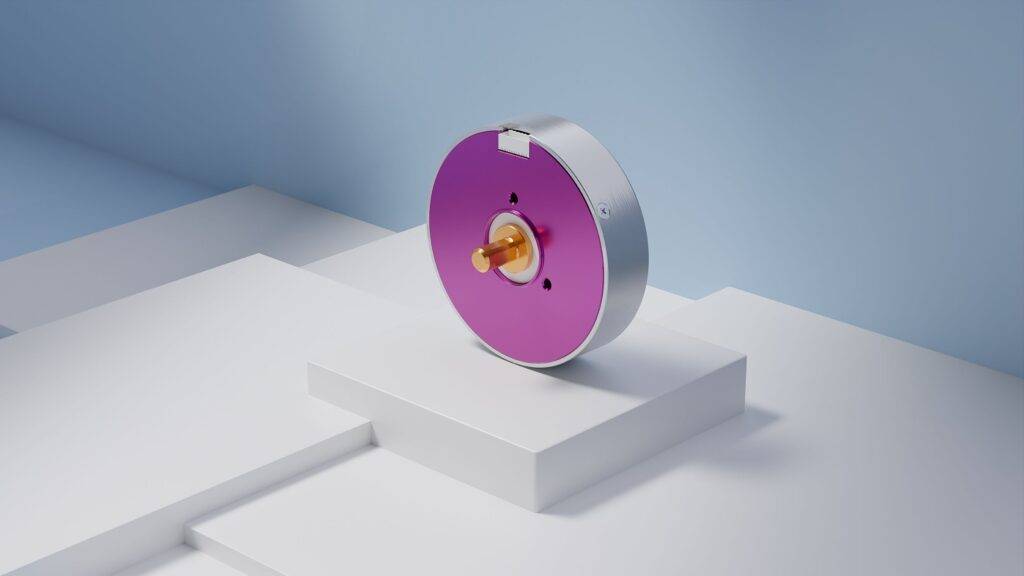Abstract: 25W performance ultrasonic motor to open new field of application
This article presents a groundbreaking development in ultrasonic motor technology: the design and performance analysis of a new 75 mm diameter non-magnetic travelling wave ultrasonic motor capable of delivering up to 25W of mechanical power and achieving a direct drive torque of 2.5 N.m, with a maximum speed of 500 RPM. The innovative design addresses limitations in existing ultrasonic motors, mainly a lack of motor on a range of power superior than 10W, offering promising applications in robotics, medical imaging, and automation. Detailed experimental investigations validate the superior performance and non-magnetic properties of the developed motor, marking a significant milestone in ultrasonic motor advancements. This development opens a new field for piezoelectric motor, where they can compete on application where electromagnetic motors traditionally lead and still bring the benefits of piezoelectricity : low latency, great precision, high torque density and silent operation.
1. Introduction:
Ultrasonic motors, especially travelling wave motors, have emerged in the 1980s as promising alternatives to conventional electromagnetic motors, offering advantages such as compact size, high torque density, and precise control. However, existing ultrasonic motor designs encounter challenges in delivering higher torque than 1,2 N.m and mechanical power superior than 10W. This article introduces a novel approach to address these limitations by presenting the design and performance evaluation of a prototyped new design of 75 mm non-magnetic ultrasonic motor.
2. Hypothesis:
We hypothesize that by optimizing the design parameters, materials used and operational characteristics of a travelling wave ultrasonic motor, it is feasible to achieve unprecedented levels of torque and mechanical power output, while still ensuring non-magnetic properties and great precision.
3. Experimental Setup:
The experimental setup was meticulously designed to comprehensively evaluate the performance and durability of the developed 75 mm non-magnetic ultrasonic motor. A custom-built test bench equipped with a controlled brake, torquemeter, and a specifically designed electronic controller was employed to facilitate precise measurement and control of motor parameters.
The motor underwent rigorous testing over an extended duration of operation to assess its sustained performance capabilities. Key performance metrics, including torque-speed characteristics, mechanical power output, and efficiency, were systematically evaluated under various load conditions. Special emphasis was placed on ensuring that the motor could sustain these performance levels for extended periods, exceeding 30 minutes of continuous operation.
Moreover, the experimental setup incorporated measures to validate the non-magnetic properties of the motor. Magnetic interference was meticulously monitored and minimized throughout the testing process to ensure compatibility with sensitive environments such as MRI systems.
4. Results: A new breakthrough in performances
Experimental findings demonstrate remarkable achievements in the developed non-magnetic ultrasonic motor. The motor exhibits a peak torque of 2.5 N.m and can deliver up to 25W of mechanical power, surpassing the capabilities of existing designs by more than 100%. Furthermore, a maximum speed of 500 RPM is attained, expanding the motor’s applicability in high torque applications. The non-magnetic property of the motor is confirmed through rigorous testing, ensuring compatibility with sensitive environments such as MRI systems.
5. Discussion: the way to industrialization
The enhanced performance and non-magnetic characteristics of the developed ultrasonic motor present unprecedented opportunities for applications in diverse fields, including robotics, medical imaging, and automation. Further optimization of the motor design and exploration of advanced control strategies hold promise for enhancing performance and versatility. Additionally, the inherent non-magnetic nature of the motor underscores its suitability for critical environments where magnetic interference must be mitigated.
6. Conclusion:
In conclusion, this article presents a significant advancement in ultrasonic motor technology through the development of a 75 mm non-magnetic motor capable of delivering high torque and mechanical power outputs. The experimental results validate the efficacy of the proposed design, marking a substantial leap forward in ultrasonic motor capabilities. The inherent non-magnetic property of the motor extends its utility to applications requiring precise and reliable operation in magnetically sensitive environments.




